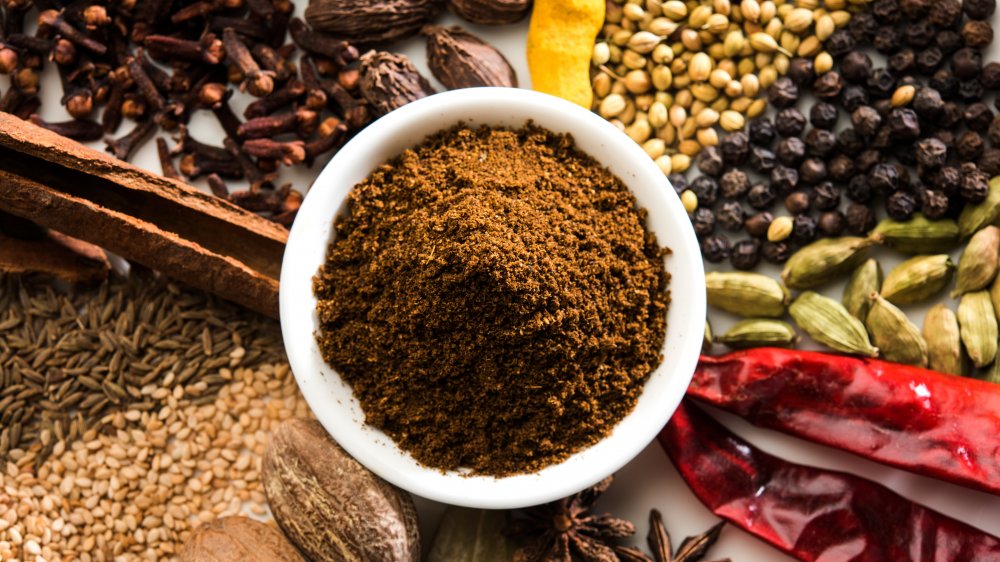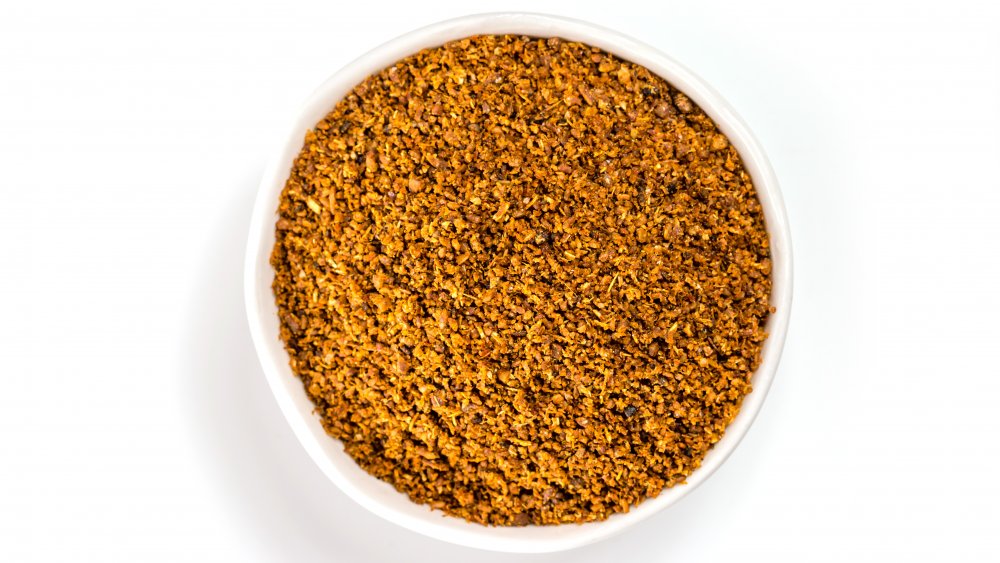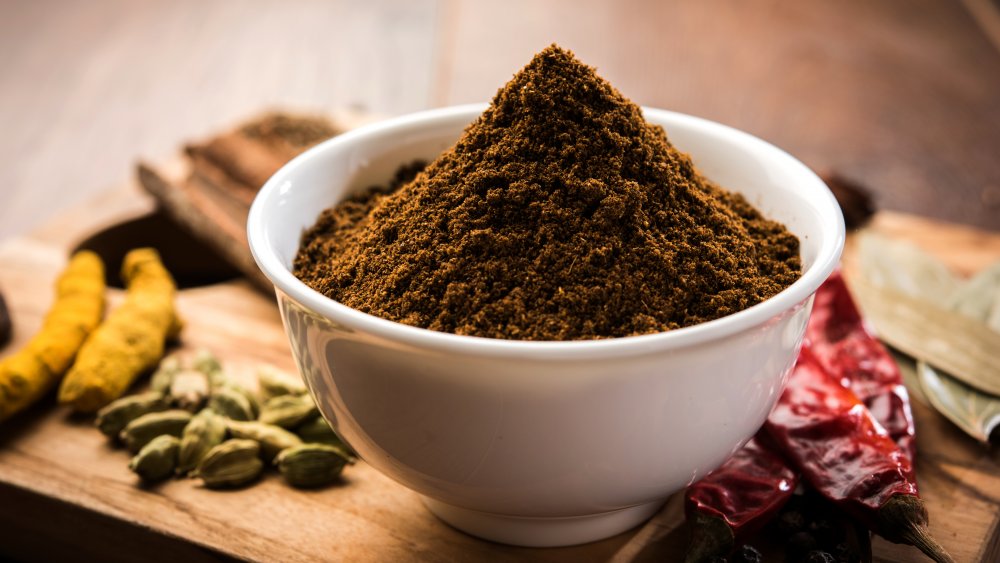Here's What You Can Substitute For Garam Masala
If you're familiar with Indian food, chances are you've already eaten or cooked with garam masala. The Spruce Eats claims this blend of ground spices is most commonly used in Indian cuisine, with the northern regions usually using it in its powdered form, and southern regions mixing it with coconut milk, water, or vinegar to create a paste.
The spices used to form garam masala are generally toasted before they're ground, and even though "garam masala" translates roughly to "hot spices," the mix is not particularly spicy. What goes into the mix can vary depending on the region it is made, but the further south the recipe for the blend is from, the spicier it tends to be. The Spruce Eats lists the most common ingredients in garam masala as coriander, nutmeg, cardamom, cloves, black pepper, cinnamon or cassia, and nutmeg. Different regions will add other spices, such as turmeric, fennel, saffron, or dried chilies, based on what is local and easily accessible.
Easy substitutes for garam masala
If you have a recipe calling for garam masala, but do not have it on hand, this blend can be made at home. While Spiceography describes the mix as being incredibly complex and often containing over 30 ingredients, they offer a few possible substitutions you can use if you find yourself in the middle of cooking and are suddenly in need.
The simplest substitution Spiceography suggests is curry powder, which you can sub in the same amounts as your recipe calls for. They claim this spice blend will not give the same warming effect as garam masala, but the flavors will meld well with most Indian dishes. Another possible substitution is a simple mix of one part cumin with one quarter part allspice. This is an easy formula to scale up or down depending on the amount you need for your recipe.
An alternative spice blend from India is chaat masala, which you probably already have on hand if you frequently cook Indian food. This spice blend is known for its cooling properties as opposed to garam masala's warming ones, but the flavors should still go nicely with your dish. They warn you to add this slowly, instead of doing a one-for-one substitution like with the other replacements, as this spice blend can become overpowering in large quantities.
You can make your own garam masala blend tailored to your palate
Finally, you can always make your own garam masala by combining individual spices. Spiceography suggests using the ratio of three parts a mix of coriander and cinnamon, one part a mix of cloves and cumin, and one-third part of a mix of cardamom and pepper.
The Spruce Eats has a slightly more complicated recipe, requiring you to toast and grind your own whole spices. They claim this will keep the blend fresher and more flavorful than purchasing it in its powdered form. Their recipe calls for 3 tablespoons of coriander seeds, 2 tablespoons of cumin seeds, 2 tablespoons of cardamom seeds, 2 tablespoons of black peppercorns, 1 teaspoon of freshly grated nutmeg, one cinnamon stick, and 1 teaspoon of whole cloves.
You can experiment with the ratios in both recipes and find the equation that works best for you, or try adding a bit of the other ingredients mentioned above to increase the spiciness of your blend.


